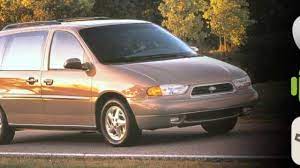How to Reset Ford Aerostar Maintenance Oil Change Indicator. Resetting the oil service light on a Ford Aerostar is a simple and straightforward process. Only reset the oil life monitoring system after replacing the engine oil and filter.

To reset the oil life monitoring system, perform these steps:
Step 1 Switch the ignition on. Do not start the engine.
Step 2 Fully press the accelerator and brake pedals at the same time.
Step 3 Keep the accelerator and brake pedals fully pressed.
Step 4 After three seconds, a message displays confirming the reset procedure is in progress.
Step 5 After 25 seconds, a message displays confirming the reset procedure is complete.
Step 6 Release the accelerator and brake pedals.
Step 7 Switch the ignition off.
Quick Information about Ford Aerostar
The Ford Aerostar is a range of vans that was manufactured by Ford from the 1986 to the 1997 model years. The first minivan produced by Ford, the model line was marketed against the Chevrolet Astro/GMC Safari and the first two generations of the Chrysler minivans. It was one of the first vehicles to introduce all-wheel drive to the segment in North America. Sold primarily in the United States and Canada, a limited number of vehicles were exported. The prototype was fitted with a 460 V8, shared with full-size Ford vehicles and one-ton Ford trucks.
Financial constraints forced Ford to divert funds towards development of the Fox platform, Panther platform, and 1980 Ford F-Series. Beyond the drawing board, the design of the Aerostar progressed further by the introduction of two Ghia-designed 7-passenger concept vehicles, the 1982 Ford Aerovan and the 1984 Ford APV. Developed under Ford model code VN1, it was the first Ford chassis given an alphanumeric designation. The entire development of the model line would cost Ford over $300 million; though lower in cost than the Ford Chrysler minivan and Ford Taurus (costing Ford $3.5 billion). The Ford Aerostar (developed under Ford model code VN1, the first Ford chassis given an alphanumeric designation) uses a rear-wheel drive chassis configuration. For its 1986 launch, the Aerostar was introduced with two engines shared with the Ranger/Bronco II. For 1988, the 2.3 L engine was discontinued, with the 3.0 L V6 becoming the sole engine offering.
In 1990, Ford introduced an all-wheel drive system called E-4WD (Electronic 4-Wheel Drive). For the 1989 model year, Ford released an extended-length version of the vehicle. During the 1990s, the extended-length Aerostar would become the most popular version of the vehicle. Ford Aerostar was one of the first Ford vehicles to feature the outdoors-themed Eddie Bauer brand as a trim package. XLT and Eddie Bauer-trim vehicles were offered with optional second-row bucket seats (a feature popularized from full-size conversion vans).
For 1993, integrated child safety seats were introduced as an option. The Aerostar name was first revealed as a concept vehicle was shown in 1984, with Ford predicting up to 40 mpg in production versions with four-cylinder diesel engines. The Eddie Bauer trim was introduced as an option package available for any non-Eddie Bauer Aerostar Wagon. After 1989, the option package came with the 4.0L V6 standard, though buyers could choose between all-wheel drive and rear-drive. Ford Aerostar was named Motor Trend magazine’s Truck of the Year for 1990.
Ford also chose a rear-wheel drive layout, which provided it with a 5,000 pounds (2,300 kg) tow rating, 2½ times the capacity of the Chrysler vans. The HFX (High Feature Experimental) Aerostar Ghia was a prototype of future minivan design. In 1988, the company commenced design work on a successor to the Aerostar for a planned 1993 introduction. In a fashion similar to the planned replacement of the Fox-platform Ford Mustang with a Mazda-based coupe in the late 1980s, Ford received a negative reaction from its dealers and the public.
If you want to know more about ford, please click Ford Trouble Repair.